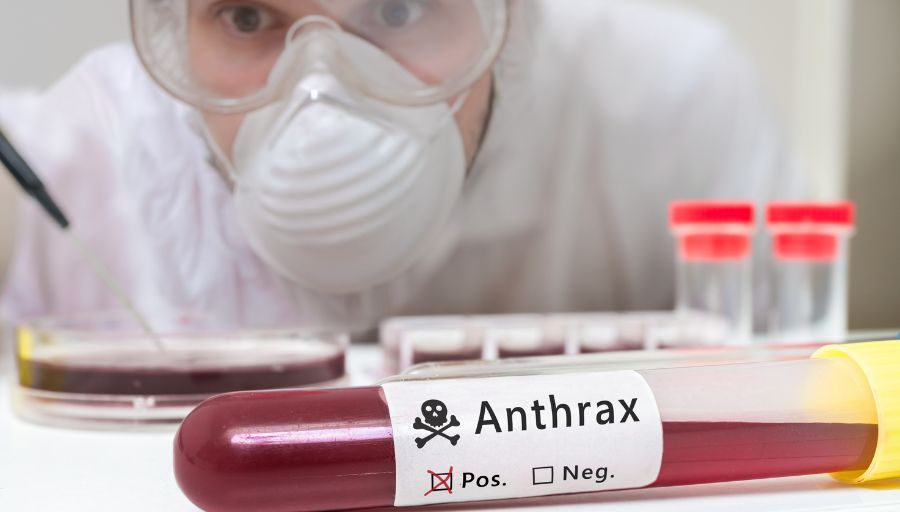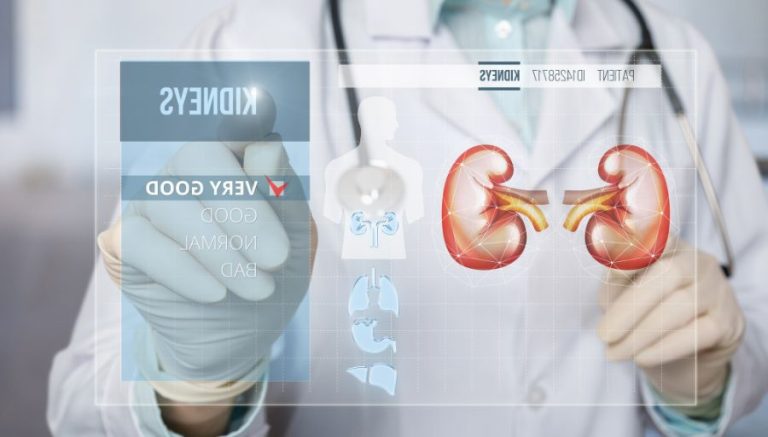Four Types of Anthrax Explained | Cutaneous Anthrax, Pulmonary Anthrax, Gastrointestinal Anthrax & Anthrax Sepsis
There are four common types of Anthrax. Below we explain the four types, starting with Cutaneous Anthrax, Pulmonary Anthrax, Gastrointestinal Anthrax, and Anthrax sepsis.
1. Cutaneous Anthrax
Cutaneous Anthrax, an infection that affects the skin, is caused by Bacillus anthracis, which typically spreads in the human body as spores are inhaled. At the same time, breathing is ingested with contaminated water and food or enters through a cut in the skin.
Cutaneous Anthrax is also known as:
- Malignant carbuncle
- Malignant pustule
1.1 Symptoms
A patient with cutaneous Anthrax can experience; blisters or lesions on the skin that progress to painless skin ulcers (open sores) with swelling around the lesions, especially on the face, neck, arms, and hands.
1.2 Diagnosis
The provider diagnoses the condition based on the patient’s history and physical examination. Laboratory tests of the patient’s blood, spinal fluid, respiratory secretions, or skin specimens can detect the toxins of the B. anthracis bacterium.
1.3 Treatment
Treatment includes using antibiotics and antitoxins to kill the toxins the bacterium produces in the patient’s body. Providers may vaccinate at–risk individuals with the Anthrax Vaccine Adsorbed (AVA) to protect patients against cutaneous and inhalation Anthrax.
2. Pulmonary Anthrax
Pulmonary Anthrax, a rare but potentially fatal infection that affects the respiratory system, is caused by the bacterium Bacillus anthracis, which typically spreads in the human body as spores inhaled.
At the same time, breathing is ingested with contaminated water and food or enters through a cut in the skin.
2.1 Symptoms
A patient with pulmonary Anthrax can experience;
- fever and chills;
- nausea and vomiting;
- stomach pain;
- headache;
- profuse sweating;
- lethargy;
- confusion;
- cough;
- shortness of breath;
- chest discomfort;
- body ache; and
- in severe and untreated cases, the patient may even die.
2.2 Diagnosis
The provider diagnoses the patient based on history and physical examination. Laboratory tests of the patient’s blood, spinal fluid, respiratory secretions, or skin specimens can detect the toxins of the B. anthracis bacterium. The provider may perform a chest X–ray or CT scan.
2.3 Treatment
Treatment includes using antibiotics and antitoxins to kill toxins the bacterium produces in the patient’s body. Providers may vaccinate at–risk individuals with the Anthrax Vaccine Adsorbed (AVA) to protect against cutaneous and inhalation Anthrax.
3. Gastrointestinal Anthrax
Gastrointestinal Anthrax, an infection that affects the digestive system, is caused by the bacterium Bacillus anthracis, which typically spreads in the human body as spores inhaled. At the same time, breathing is ingested with contaminated water and food or enters through a cut in the skin.
3.1 Symptoms
A patient with gastrointestinal Anthrax can experience;
- fever and chills;
- nausea and vomiting;
- stomach pain;
- headache;
- flushing;
- diarrhea;
- sore throat;
- abdominal swelling;
- hoarseness of voice;
- pain in swallowing;
- swelling of lymph nodes in the neck; and
- fainting.
In severe and untreated cases, the patient may even die.
3.2 Diagnosis
The provider diagnoses the patient based on history and physical examination. Laboratory tests of the patient’s blood, spinal fluid, respiratory secretions, or skin specimens can detect the toxins of the B. anthracis bacterium.
3.3 Treatment
Treatment includes using antibiotics and antitoxins to kill toxins the bacterium produces in the patient’s body.
4. Anthrax sepsis
Anthrax Sepsis, also called blood poisoning, is a life–threatening condition that results from an infection that gets into the bloodstream and overwhelms the body’s defenses. Anthrax sepsis is caused when the bacterium Bacillus anthracis enters the bloodstream from another source of the infection, in particular, pulmonary Anthrax.
4.1 Symptoms
A patient with anthrax sepsis can experience;
- fever and chills;
- nausea and vomiting;
- stomach pain;
- headache;
- profuse sweating;
- lethargy;
- confusion;
- cough;
- shortness of breath;
- chest discomfort;
- body ache; and
- death due to sepsis.
The symptoms may vary depending upon the severity of the sepsis and/or the organs involved.
4.2 Diagnosis
The provider diagnoses the disease based on the patient’s symptoms, history, and physical examination.
Laboratory tests of the patient’s blood, spinal fluid, respiratory secretions, or skin specimens can detect the toxins of the B. anthracis bacterium. The provider may perform a chest X–ray or CT scan in case of inhalation of Anthrax.
4.3 Treatment
Treatment includes using antibiotics and antitoxins to kill toxins the bacterium produces in the patient’s body. Providers may vaccinate at–risk individuals with the Anthrax Vaccine Adsorbed (AVA) to protect against cutaneous and inhalation Anthrax.







